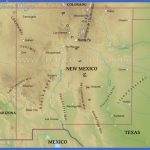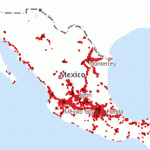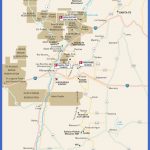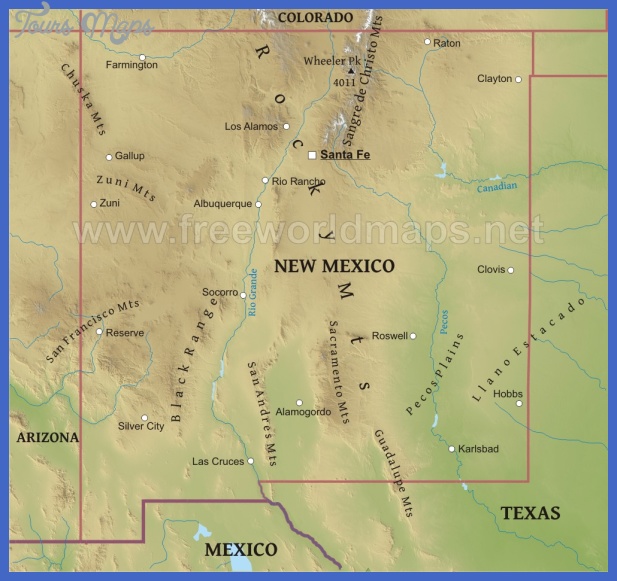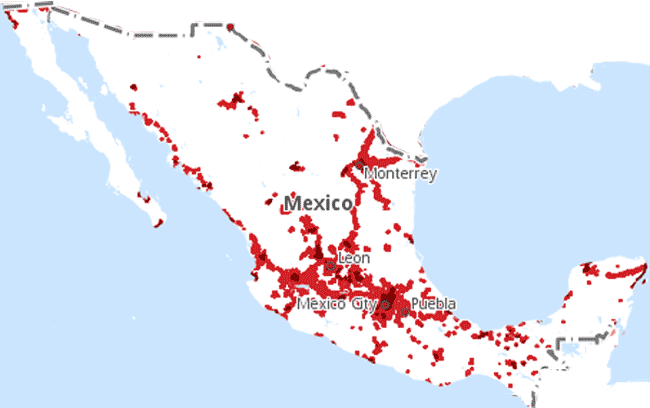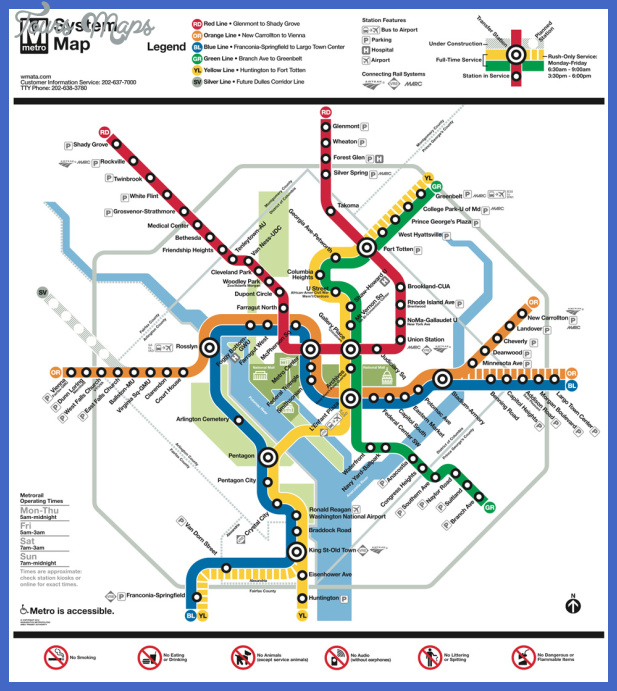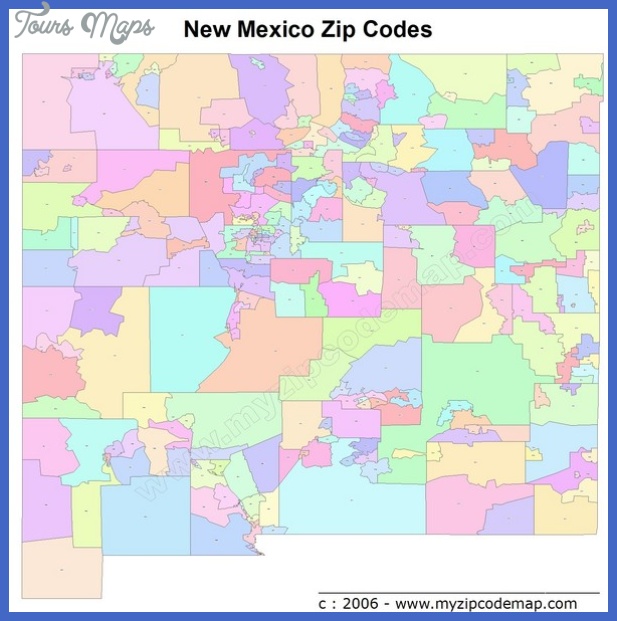New Mexico historical overview
New Mexico was born in Zacatecas, the colonial silver city in Mexico. Don Juan de Onate the man credited with claiming New Mexico for the Spanish Crown and for the viceroyalty of New Spain (today’s Mexico) could not have been more thoroughly Mexican. He was born in Zacatecas to a wealthy Basque man who had, along with three other Spaniards, discovered the silver mine of La Bufa, which would make Zacatecas the wealthiest mining city of colonial Mexico. Onate himself was married to Isabel Moctezuma, the daughter of the Aztec emperor and a descendant of Hernan Cortes. Onate’s children were thus one-eighth Aztec and seven-eighths Spanish, but all were born in Mexico.1 That is why the future state of the United States was named not after Spain but after Mexico City: New Mexico.
Yet, the cultural heritage and historical memory of New Mexico, and of the Nuevomexicanos, are more complex than simply saying that it was the product of the ambition of the last conquistador, don Juan de Onate. Nuevomexicanos Latinos from New Mexico are perhaps unlike any other group of Latinos in the United States. Many trace their heritage and family histories within New Mexico to the seventeenth century. Families such as the Jaramillos, for example, members of which run today the famous restaurant and inn Rancho de Chimayo, have been living in New Mexico first through Spanish, then Mexican, and then U.S. rule. Other Latinos in New Mexico, mostly in the south, trace their heritage to the nineteenth century and its shifting boundary lines before 1848, when most of today’s New Mexico became a U.S. territory in the aftermath of the Mexican-American War. Moving to the Mesilla Valley to remain in Mexican territory, Mesilleros retain a strong cultural identity as Hispanos and Nuevomexicanos. And still others are migrants from Mexico, relative newcomers to a state that has had a Latino presence for more than four centuries.
The tension caused by Anglo distrust of Hispanic traditions, of Nuevomexicanos self-styling as Spanish Americans, and of Mexican-ness is seen in high relief in the events surrounding the publication in October 1901 of a racist editorial by the Protestant missionary Nellie Snyder in The Review, an English-language weekly newspaper from Las Vegas, New Mexico. In her editorial Snyder compares Nuevomexicanos to a degraded race of half-breeds, superstitious pagans, and semibarbarians. A young lawyer and author called Eusebio Chacon addressed an angry group of some 600 Nuevomexicanos on October 26. Having denounced the author, who had since been banished from the town, Chacon asserted the very essence of the complex Nuevomexicano identity being formed at the turn of the century:
I am Spanish American, as are those who hear me. No other blood circulates through my veins but that which was brought by don Juan de Onate and by the illustrious ancestors of my name. If there is any place in Spanish America or in the former
Spanish colonies that has conserved the physiognomic traits of the raza conquista-
dora, it is New Mexico.
Chacon’s statement could not have more succinctly expressed a centuries-old tradition of self-identified Spanishness. Chacon elaborated this identity of Nuevomexicanos as culturally and ethnically Spanish at a time when New Mexico was vying to become a U.S. state and its inhabitants were constantly called culturally backward, racially inferior, and religiously superstitious by Anglos because of their Mexican heritage. By appealing to their European pedigree, Nuevomexicanos would assert their Spanish identity as a way of identifying their unique place in the United States. At the same time, by asserting this identity, they would provide yet another layer to the complex mosaic of cultural identity of Latinos in New Mexico.
The mixture of Nuevomexicanos born in New Mexico and of Mexicans born in modern Mexico who migrated to New Mexico makes the Latino history of New Mexico exceptionally complex. Because this dual heritage can be traced to the late sixteenth century, we will return to those earliest roots and trace the development of a distinctly Latino cultural, social, and political identity through the Spanish (1598-1821) and Mexican (1821-1848) periods. Knowledge of this rich history allows understanding of how a particular Nuevomexicano sense of identity developed in the following decades.
Since the end of the twentieth and beginning of the twenty-first centuries an intriguing ethnic irony has been found in New Mexico: Nuevomexicanos are regarded by many Anglos in the rest of the United States as less American than themselves, and at the same time they are regarded by those of Mexican descent as less Mexican than themselves. Ni de aca ni de alla (neither from here nor from there) is the phrase often applied to those who grew up Latino in a state with a four-century history of Spanish presence; this is often how Nuevomexicanos are seen: a product neither of the Spanish past, nor of intermarriage with Native Americans, nor of the Anglo ethnic majority of the United States, nor of the modern Mexican linguistic-cultural entity.
New Mexico’s Hispanic Trajectory over Four Centuries The Early Colonial Period (1598-1680)
Juan de Onate had spent years, and considerable money, convincing the viceroy of New Spain to allow him the privilege of advancing on what would become New Mexico. Spanish colonial law and political traditions dated to medieval Spain, and the private funding of conquest and settlement was the long-established norm. As with Hernan Cortes and Francisco Pizarro, conquest was funded privately in the hopes of achieving wealth, titles of nobility, and grants of land for service to the Crown. The New Mexico endeavor was no exception to this rule.
Once Onate finally received approval, he and his caravan set out for the north. By April 1598 they had arrived at the northern end of the Chihuahua desert, on the outskirts of today’s Ciudad Juarez. Separated by the Rio Grande, Onate’s group spent several days grazing their pack animals and searching for a suitable crossing of the river. Finally, on April 30, 1598, Onate led his group across the river into what is today the lower valley of El Paso, Texas. The royal notary read the official act of possession in the name of the Crown, and New Mexico was born. Shots were fired into the air in celebration; trumpets blew; men and children alike shouted their excitement. They were going to be rich.3
But bad omens haunted the expeditioners as they marched through the desert, through the Mesilla Valley. Just to the north of today’s Las Cruces, Pedro Robledo died, of uncertain causes. The Robledo campsite still exists, west of the flat river plain of the Rio Grande, just to the north of the central Mesilla Valley. For the next 11 years Onate would be the Spanish governor of newly founded New Mexico. His administration was marked by isolation from Mexico City, political intrigues, lack of supplies, raids by unfriendly Native American groups, and, worst of all, lack of success in the discovery of mines. The hopes and dreams of the expedition members had been based on the possibility that they would discover the kinds of silver or gold mines that had made so many Spanish colonists fantastically wealthy. This was not to be the case in New Mexico. In 1599 Native Americans from the Acoma Pueblo attacked the Spanish group, which led Onate to issue summary justice against them for rebelling against the Crown. Males over the age of 25 were to have one foot cut off and to be condemned to 20 years of servitude. Others were punished as well. It was an inauspicious beginning for the earliest Spanish colony in New Mexico, and one which would presage more violent events decades later.
When it became clear that New Mexico was not to be a new Zacatecas, members of the Spanish colony and expedition began to rebel. Onate retrenched and began to enforce royal justice as governor of the new province. In the end Onate was recalled to Mexico City to answer charges of abuse of power and corruption, convicted by royal courts, and exiled from Mexico in 1614 by the viceroy. Eventually, he was able to have the charges commuted in Spain, and he hired himself out as a mining consultant in Spain. But his dream of New Mexico would not materialize in his lifetime.
By 1608 Franciscan missionaries had begun mass baptisms of Native Americans in New Mexico. Their presence there would be fundamental. As an essentially frontier society for most of the Spanish period, New Mexico did not have a centralized Church, parish priests, or a resident bishop. The Franciscans were, in effect, the only Catholic Church presence that New Mexico knew. The flavor of Catholicism that would develop just as the nature of economic, political, and social networks would be largely ad hoc, sporadic, and based on
reciprocal barter systems instead of centralized rule, centralized economy, or state/Church apparatuses.
In 1609 the viceroy appointed a new governor, don Pedro de Peralta, who established the first permanent Spanish settlement, Santa Fe. Though Onate had given the rudimentary impetus for this establishment, Peralta was largely credited as having started this settlement. Situated at the base of the Sangre de Cristo Mountains, Santa Fe was established as a site that would serve both political and religious goals. In this period, Spanish colonial expansion was as much about spreading Catholicism as it was about expanding the civil power of the Spanish Crown and discovering mines.
At its core Santa Fe was a small Spanish settlement surrounded by Native American groups, both Pueblos as well as itinerant, raiding Plains Native Americans. It received little support from the Crown, given its location on the furthest outskirts of the viceroyalty of New Spain. Santa Fe was in a constant state of lack of actual specie, and for this reason barter was established as the principal form of economic exchange. The Spaniards raised livestock and huddled through the winters wondering if it would be their last. It was a far cry from the urbanity and bustling city life of Mexico City, which had some 100,000 inhabitants, large cathedrals, churches, a university, restaurants, bullfights, whorehouses, and a grand central plaza named in the Nahuatl fashion the zocalo. One can only imagine the sense of isolation that early Spanish settlers in Santa Fe must have felt.
The Franciscan missionary effort expanded through the seventeenth century. Because there was no formal Church structure in New Mexico, the Franciscans were the only priests that Spaniards and Native Americans knew. They promoted an almost millenarian vision and saw New Mexico as their own personal Catholic fiefdom. But a handful of missionaries could never completely control either the Spanish or the Native American populations. Father Alonso de Benavides eventually returned to Mexico in 1629 and wrote a lengthy memorial history of New Mexico in which he describes the mission of Santa Fe as one facing innumerable challenges and difficulties. Throughout the next decades, Santa Fe and the growing settlements of Spaniards near Albuquerque, which began to spring up in the 1660s, were characterized by poverty and isolation. One prominent Spanish settler the first alcalde (magistrate) of the Middle Valley, don Fernando Duran y Chavez asked the viceroy in a 1643 letter to take mercy on this miserable kingdom of New Mexico.4
Given New Mexico’s state of isolation, missionaries and representatives of the Inquisition saw demons and criminals at every turn. It has been rumored, but never thoroughly proven, that early New Mexico was a haven for Jews who had fled the oppressive laws and policies of the Crown to live secretly as Jews in New Mexico. Others practiced witchcraft, some of it learned from the Native Americans. One woman had made pacts with the devil. Adultery and secret liaisons were com-
mon ways to break the tedium of life on the frontier. Because of New Mexico’s position on the geographic, political, and cultural margins of New Spain, Spaniards there began to develop a kind of frontier mentality: a sense that though they may have been isolated, they were not without culture.
During this period Franciscans began to engage in a variety of attempts to stamp out Native American religious practices. In particular, the Franciscans found various sexually charged rituals of the Pueblo Native Americans to be incompatible with Catholicism, and the worship of spirits and deities was attacked. Underlying all this was the fact that by the 1670s Santa Fe was nothing more than an outpost, a small town with a small, underarmed Spanish population. When the revolution came in 1680, the Franciscans and many Spanish settlers were literally the first up against the wall to face the wrath of the Pueblo Native Americans who, under the leadership of the charismatic Pope, had decided they had had enough of Spanish rule.
New Mexico Metro Map Photo Gallery
Maybe You Like Them Too
- Top 10 Islands You Can Buy
- Top 10 Underrated Asian Cities 2023
- Top 10 Reasons Upsizing Will Be a Huge Travel Trend
- Top 10 Scuba Diving Destinations
- The Best Cities To Visit in The World

